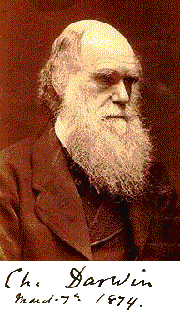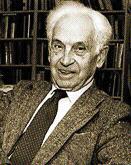ERNST MAYR is indeed the grand old man of biology. As I write these words of tribute near the end of 2002, Dr. Mayr continues to write and publish in his 98th year. We got two books from him in 2001 (one co-authored with Jared Diamond). What Evolution Is is his first book-length work written for the layman. It deserves to be on the reading list of every student of evolutionary biology. It is often said that Mayr is the grand old man of evolutionary biology, but that is far too limited a tribute. During the course of his long and fruitful life he has informed us not only about evolution, but also about many aspects of biology, zoology, ornithology, taxonomy and systematics, and the history of science with particular emphasis on biological thought and evolutionary theory.
My first exposure to instruction by Dr. Mayr was in 1971 or 1972 when, as a layman ornithologist, I devoured his Species Taxa of North American Birds. Co-authored with Lester Short, this was an influential little book, driving home arguments concerning the recognition of species, superspecies, lumping and splitting and, of course, the biological species concept. In some ways it was a dense work in taxonomy but, due to the clarity of writing, I was able to grasp the concepts being discussed and wanted to learn more. Over the years I have acquired all of Mayr's books and benefited immensely from them. His latest book (with Diamond) was The Birds of Northern Melanesia with particular emphasis on biogeography and the origin of bird species in that region.

 What Evolution Is is an important book for the layman interested in evolution or biology. It covers a myriad of subjects, usually with ideal brevity. There are many nice graphics, a good glossary and a fine index to help you refind something. I dog-eared so many pages that I really need the index. There is a short appendix covering some of the frequently heard objections to evolution, and another with short answers to frequently asked questions, such as: "Is the Gaia hypothesis incompatible with Darwinism? Even though most Darwinians do not accept the Gaia hypothesis, the most prominent adherents [of it], for instance, Lynn Margulis, completely accept Darwinism. There is no conflict." I can almost hear Ernst Mayr chuckling. I wonder if he read her last book.
What Evolution Is is an important book for the layman interested in evolution or biology. It covers a myriad of subjects, usually with ideal brevity. There are many nice graphics, a good glossary and a fine index to help you refind something. I dog-eared so many pages that I really need the index. There is a short appendix covering some of the frequently heard objections to evolution, and another with short answers to frequently asked questions, such as: "Is the Gaia hypothesis incompatible with Darwinism? Even though most Darwinians do not accept the Gaia hypothesis, the most prominent adherents [of it], for instance, Lynn Margulis, completely accept Darwinism. There is no conflict." I can almost hear Ernst Mayr chuckling. I wonder if he read her last book.
There is thorough coverage of modes of speciation, species turnover and extinction, macroevolution, and a very nice chapter on the evolution of mankind. Just flipping through the book to pull out a few topic headings makes me realize I need to reread it as a refresher course. Having waded through Mayr's weightier works aimed at professionals, I really have appreciated this book, almost as though he wrote it for me. At the bottom of this paper are listed all of Dr. Mayr's books, most of which remain available today. Also see the section for basic books in evolution by a variety of authors.
In Memoriam Ernst Mayr died on February 3, 2005, at the age of 100. Here is the text of one of his obituaries.
|
EVOLUTION deals with the science of life processes on the planet Earth. It does not include the origin of the universe (cosmology) or the formation of stars (astronomy) or planets (planetary science) or life itself (abiogenesis). Nor does it deal with the possibility of life after death (theology or philosophy). In the chart above evolution is properly shown to embrace ONLY the period shown in yellow. Nothing else. Evolution has two basic definitions:
(1) Descent with modification from common ancestors, resulting in diversification/speciation.
(2) Viewed from genetics, "a change in allele frequency within a population over time."
Descent from common ancestors could begin ONLY after there was life in existence from which descent could take place. Without ancestors there can be no evolution. Also, without genes or some other kind of replicating material (DNA, RNA or something not yet discovered) evolution could not occur. There had to first come into existence some form of replicating material that allowed for variation in organisms. It need not originally have been the DNA that is universal today.
There is an active field of scientific research today known as Origins of Life Research or Abiogenesis. Scientists are trying to determine what preceded evolution and how the first forms of life arose. While there has been considerable success over the past 50 years in demonstrating how complex organic molecules could come into being, there is still a long way to go to demonstrate that any of the many hypotheses currently under investigation are worthy of the term "theory." Even if these laboratory experiments ultimately achieve what all scientists conclude is the creation of life (I think they will, eventually) it will not be possible to say that this is what originally happened about four billion years ago. It will only demonstrate a possible way in which organic evolution might have been started.
|


What Is a Species and What Is Not : This is a lengthy essay about the Biological Species Concept and other aspects of taxonomy. In large measure it is a response to his critics and the ill-informed (1996).
Zoogeographic Position of the Hawaiian Islands : Condor 45 (2): 45-48 (1943).
History of North American Bird Fauna : Wilson Bulletin 58 (1): 3-41 (1946).
The Number of Species of Birds : The Auk 63 (1): 64-69 (1946).
(2001) What Evolution Is : Pbk., 336 pp., 0465044263, $11.20
(2001) Birds of No. Melanesia: Speciation, Ecology, & Biogeography
with Jared Diamond, Hdcvr., 0195141709, $55.00
(1999) One Long Argument : Charles Darwin and the Genesis of Modern
Evolutionary Thought. Pbk., 0674639065, $11.17
(1997) This Is Biology : The Science of the Living World : Pbk., 352 pp., 0674884698, $11.87
(1990) Principles of Systematic Zoology : with Peter Ashblock. 0070411433
Out of Print--Limited Availability. Used & new from $49.95
(1988) Toward a New Philosophy of Biology : Observations of an Evolutionist. Pbk., 0674896661, $21.50
(1982) The Growth of Biological Thought : Diversity, Evolution, and Inheritance. Pbk., 0674364465, $26.95
(1980) The Evolutionary Synthesis : Perspectives on the Unification of Biology
with W. B. Provine, Ed., Pbk., 504 pp., 0674272269, $23.50
(1976) Evolution and the Diversity of Life : Selected Essays : Pbk., 752 pp., 067427105X, $28.95
(1970) Species Taxa of North American Birds. A Contribution to Comparative Systematics
with Lester L. Short. 127 pp., 8 tables, $7.00 (May be out of print)
(1970) Populations, Species and Evolution : An Abridgment of Animal Species and Evolution.
Pbk., 0674690133, $21.95
(1964) On the Origin of Species a Facsimile of the First Edition
Introduction by Mayr. Pbk., 0674690133, $16.00
(1963) Animal Species and Evolution : Out of Print--Limited Availability. Used & new from $25.00
(1953) Methods and Principles of Systematic Zoology. with E. Linsley and R. Usinger. Out of Print.
(1946) Birds of the Philippines : with Jean Delacour. Out of Print.
(1945) Birds of the Southwest Pacific: Field Guide to Birds Between Samoa and New Caledonia
Out of Print--Limited Availability. Used & new from $7.00
(1942) Systematics and the Origin of Species : Pbk., 368 pp., 0674862503, $19.50
The Species Problem : Hdcvr., (September 1974), 0405057490, Out of stock.
|





